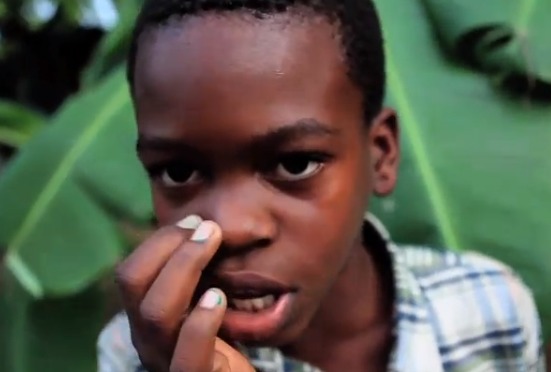Make mouth music
Create rhythmic and melodic sounds using only your mouth—beatboxing, humming, whistling, and tongue clicks—then combine patterns to make simple songs.



Step-by-step guide to make mouth music
DIY Kazoo from a Toilet Roll! Easy Music Craft for Kids
Step 1
Find a quiet spot and sit down comfortably.
Step 2
Pick up the mirror and hold it so you can see your mouth.
Step 3
Hum up and down five times to warm your voice.
Step 4
Make a bass drum sound by saying "buh" with a quick burst of air three times.
Step 5
Make a hi-hat sound by saying "ts" sharply three times.
Step 6
Make a snare sound by making a soft "pff" sound three times.
Step 7
Click your tongue against the roof of your mouth three times to practice tongue clicks.
Step 8
Whistle a short four-note melody and repeat it twice.
Step 9
Hum the same four-note melody once to add a harmony line.
Step 10
Set the timer for 30 seconds.
Step 11
Play a simple 4-beat loop using the bass hi-hat snare pattern until the timer stops.
Step 12
Combine your 4-beat loop with your whistled melody and practice the combined song three times.
Step 13
Write your beat pattern and melody as short notes or words in your notebook.
Step 14
Share your finished creation on DIY.org.
Final steps
You're almost there! Complete all the steps, bring your creation to life, post it, and conquer the challenge!


Help!?
What can we use if we don't have a mirror or a timer for this mouth-music activity?
If you don't have a mirror, use a reflective spoon or a shiny window to watch your mouth, and if you don't have a timer use your phone's stopwatch or count to 30 to replace the 30-second timer.
I'm struggling to make the soft "pff" snare and to whistle the four-note melody—what should I try?
If the 'pff' snare (step 'Make a snare sound by making a soft "pff" sound three times') is too harsh or quiet, loosen your lips and exhale gently practicing one 'pff' at a time, and if you can't whistle the four-note melody try humming the melody first and then purse your lips to blow the same notes slowly.
How can I adapt the activity for different ages, like toddlers versus older kids?
For toddlers, simplify to watching the mouth in the mirror, humming up and down once and practicing one sound like 'buh' or tongue clicks with a parent helping and skip the 30-second loop and notebook steps, while older kids can lengthen the timer, write detailed beat notation in the notebook, and practice the combined song three times or record layers.
What are easy ways to extend or personalize the mouth-music project after finishing the basic loop and melody?
Extend the activity by changing the 4-beat loop tempo, adding claps or stomps to emphasize the bass 'buh' and hi-hat 'ts', writing the new pattern and melody in your notebook, and recording or sharing the final version on DIY.org.
Watch videos on how to make mouth music
5 DIY Musical Instruments That Actually Work
Facts about vocal music and beatboxing
🥁 Beatboxing can mimic entire drum kits and basslines — top beatboxers layer sounds to make a full "band" from their mouths.
🎶 Humming boosts nitric oxide in your nasal passages, which can improve airflow and make your sound feel richer.
🫁 Practicing beatboxing, humming, and whistling builds breath control, timing, and coordination — great musical superpowers!
🌬️ The Canary Island whistled language Silbo Gomero was used to send messages across valleys for kilometers.
👅 Tongue clicks are real speech sounds used as consonants in languages like Xhosa and Zulu.
How do you make mouth music with kids?
What materials do I need for mouth music?
What ages is mouth music suitable for?
What are the benefits of making mouth music?


One subscription, many ways to play and learn.
Only $6.99 after trial. No credit card required



